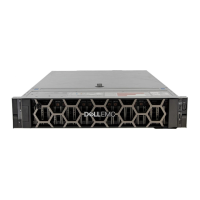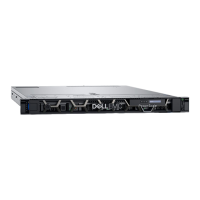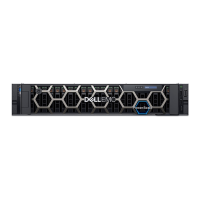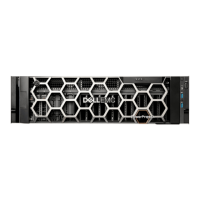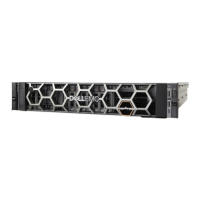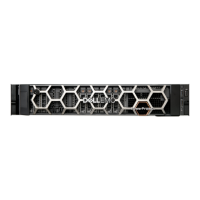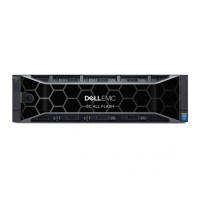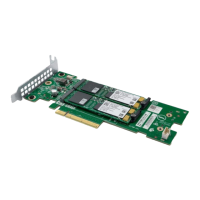• Virtual storage supports the following features:
• Tiering
• Snapshots
• Replication
• Thin provisioning
• One pool per installed RAID controller and up to 16 disk groups per pool
• Maximum 1 PB usable capacity per pool with large pools feature enabled
• RAID levels 1, 5, 6, 10, and ADAPT
• Adding individual disks to increase RAID capacity is only supported for ADAPT disk groups
• Capacity can be increased by adding additional RAID disk groups
• Page size is static (4 MB)
• SSD read cache
• Global and/or dynamic hot spares
• Linear storage supports the following features:
• Up to 32 pools per installed RAID controller and one disk group per pool
• RAID levels 0, 1, 3, 5, 6, 10, 50, ADAPT, and NRAID
• Adding individual disks to increase RAID capacity is supported for RAID 0, 3, 5, 6, 10, 50, and ADAPT disk groups
• Configurable chunk size per disk group
• Global, dedicated, and/or dynamic hot spares
NOTE:
Dell EMC recommends using virtual storage.
NOTE: After you create a disk group using one storage type, the system will use that storage type for additional disk
groups. To switch to the other storage type, you must first remove all disk groups.
Creating disk groups and pools
The panel that is displayed when creating disk groups and pools is dependent upon whether you are operating in a virtual storage
environment or a linear storage environment.
Virtual storage environments
If you are operating in a virtual storage environment, the system scans all available disks, recommends one optimal storage configuration,
and displays the suggested disk group layout within the panel.
In a virtual storage environment, the storage system automatically groups disk groups by pool and tier. The disk groups also include a
description of the total size and number of disks to be provisioned, including the configuration of spares and unused disks.
If the system is unable to determine a valid storage configuration, the wizard lists the reasons why and provides directions on how to
achieve a proper configuration. If the system is unhealthy, an error is displayed along with a description of how to fix it. Follow the
recommendations in the wizard to correct the errors, then click Rescan to view the optimized configuration.
For a system with no pools provisioned, if you are satisfied with the recommended configuration, click Create Pools to provision the
system as displayed in the panel and move on to attaching hosts. For a system that contains a pool, if you are satisfied with the
recommended configuration, click Expand Pools to provision the system as displayed in the panel.
If your environment requires a unique setup, click Go To Advanced Configuration to access the Create Advanced Pools panel. Select
Add Disk Group and follow the instructions to manually create disk groups one disk at a time. Select Manage Spares and follow the
instructions to manually select global spares.
Linear storage environments
If you are operating in a linear storage environment, the Create Advanced Pools panel opens.
Select Add Disk Groups and follow the instructions to manually create disk groups one at a time. Select Manage Spares and follow the
instructions to manually select global spares. Click the icon for more information about options presented.
Open the guided disk group and pool creation wizard
Perform the following steps to open the disk group and pool creation wizard:
1. Access Storage Setup by performing one of the following actions:
• From the Welcome panel, click Storage Setup.
• From the Home topic, click Action > Storage Setup.
2. Follow the on-screen directions to provision your system.
Perform system and storage setup
39

